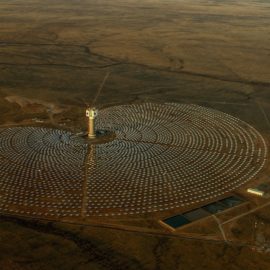
Blue Hydrogen is wonderful! Louisiana is a leader in it! What? More emissions? Tell me that is not true.
Colorless, odorless and highly combustible, hydrogen has been touted as the fuel of the future in a world searching for clean energy. When burned, hydrogen fuel leaves behind only water, unlike the fossil fuels that are largely responsible for pumping more carbon into the atmosphere, making the world hotter, seas higher and storms fiercer. In Louisiana, this seemingly miraculous alternative could be used to decarbonize the industrial sector that is responsible for almost two thirds of the state’s greenhouse gas emissions. But the energy produced is only as clean as the methods used to extract hydrogen in the first place.
nola.com
The state is backing it and a plant is approved. It has to be good, right?
Hydrogen came under new scrutiny in October when Gov. John Bel Edwards announced a Pennsylvania company’s plans to build a $4.5 billion “blue” hydrogen plant in Ascension Parish, set to come online in 2026 and provide a low-carbon liquid fuel that could power airplanes, trucks and ships. The governor’s endorsement came with assurance that the plant aligned with his ambitious climate goals for Louisiana to achieve net-zero carbon emissions by 2050. Low carbon is not zero carbon, however. In fact, a peer-reviewed study published in August found that blue hydrogen might lead to even more greenhouse gas emissions over its life cycle than simply burning natural gas. That raises questions about how large a role the product should play in the global energy transition, let alone Louisiana’s. Environment advocates such as Darryl Malek-Wiley, a senior organizer for the Sierra Club’s Delta chapter in New Orleans, worry the fuel acts as an “expensive distraction,” delaying efforts to halt the use of fossil fuels. “It’s a shell game,” Malek-Wiley said. “It doesn’t work. Carbon capture and blue hydrogen are another effort to continue drilling for natural gas and not work toward a clean environment.”

http://www.fsec.ucf.edu/en/consumer/hydrogen/basics/production.htm
But blue is a pretty color.
Introduced by the oil and gas industry, “blue” is a relatively new addition to the hydrogen rainbow. Today, most of the world’s hydrogen supply is “gray” – and extremely carbon intensive. Most industrial plants that manufacture hydrogen extract it from the methane within natural gas. To do that, they use steam, which also is produced with power from burning fossil fuels. To earn the more environmentally friendly “blue” moniker, companies use carbon capture technology. That prevents most of the greenhouse gas produced by the steam process from entering the atmosphere. They then cool the captured carbon dioxide close to a liquid state, transport it by pipelines and store it about a mile beneath the earth’s surface. In the governor’s Oct. 14 announcement, Air Products and Chemicals Inc. said it will capture 5 million tons of carbon dioxide per year at its planned $4.5 billion blue hydrogen manufacturing plant at Burnside, for storage underground across five parishes. The company promised to sequester 95% of the carbon dioxide created while making hydrogen. Unlike the other forms, green hydrogen removes carbon emissions from the equation. It is extracted by using renewable energy to send an electric current through water, separating hydrogen from oxygen in a process known as electrolysis. In Donaldsonville, the fertilizer producer CF Industries – the No. 1 source of greenhouse gas emissions in Louisiana – is looking to produce hydrogen for ammonia through electrolysis with renewable energy already on the electrical grid.
Carbon capture? The state is really involved in this so that make blue hydrogen better? The company is bullish on what they can do. Others not so much.
Air Products spokesman Arthur George said the company expects blue hydrogen to address the world’s hydrogen needs while simultaneously producing less carbon than those without carbon capture. That will give the world time to increase the supply of renewable energy, he said. “Blue hydrogen supply can satisfy significant energy requirements while hydrogen demand and renewable energy supply can grow in parallel. This enables an economically sustainable pathway for transition to hydrogen with near-term greenhouse gas reduction benefits,” George said. But the August study, funded by Cornell University and the Park Foundation, argues that blue hydrogen “appears difficult to justify on climate grounds” even if 90% of the carbon produced in the extraction process is captured and permanently stored underground. Cornell professor Bob Howarth, who co-authored the study, said that while the blue hydrogen process always emits less carbon than gray plants, it’s by a small margin. And under his scenarios, it never produced less carbon than burning natural gas for energy. Much of the greenhouse gas associated with the process comes from the methane released inherently by drilling for the natural gas that is used as feedstock and to power operations.
Is this good only because industry emits the lions share of our emissions and so any thing that might work has to be tried?
Because of this, Howarth doubts blue hydrogen’s ability to help with reaching the goal of net-zero carbon emissions in the next 29 years. “Here in New York, we’re not going to do that. We’re going to prohibit the use of hydrogen – blue or gray – from natural gas because of its climate-damaging effects,” Howarth, who sits on his state’s Climate Action Council, said in an interview the The Times-Picayune | The Advocate. “I’m afraid your governor’s not paying attention to the science on it. He’s just paying attention to marketing from the oil and gas industry.” Malek-Wiley said taxpayer money would be better spent supporting other climate solutions such as green hydrogen or increasing energy efficiency. He said the Louisiana pipelines that make the state poised to serve as a carbon capture hub already leak twice as often as the national average, citing a recent report from environmental nonprofit Healthy Gulf. In response to Cornell paper’s findings, George said the study was “significantly flawed.” “It does not account for the different ways to make blue hydrogen, different energy sources and carbon capture rates. Many of the report assumptions are in direct contrast to scientifically accepted analytical practices and overly simplistic,” he said, adding that Air Products’ plant will use a different method than steam to separate the hydrogen from the natural gas to boost their capture capabilities.
The governor is still deciding and reading the conflicting reports. Maybe not all is well and the pretty blue is no longer pretty.
The governor’s spokesperson, Christina Stephens, said Edwards’ team is still digesting the study, although his advisers already suspect some of the research’s assumptions “may be subject to reasonable dispute or uncertainty.” “The Air Products announcement was an exciting one for us in Louisiana because it represents the largest permanent carbon sequestration project in the world, which is a clear demonstration of our ability to grow the Louisiana economy while lowering the carbon footprint of industry,” Stephens said. “That said, the governor understands that blue hydrogen projects alone aren’t going to get Louisiana to its goal of reducing carbon emissions to net zero by 2050.” At this point, nothing is off the table, Stephens said, as the state’s climate task force continues to sift through options and strategies toward reaching net-zero carbon emissions. Currently the task force is split on how large of a role carbon capture and sequestration projects should play in Louisiana’s future. In the latest task force meeting, an analysis by The Water Institute of the Gulf found that the task force’s current plan falls far short of meeting Edwards’ climate goals.
Maybe the problem is focusing on net-zero rather than zero.



